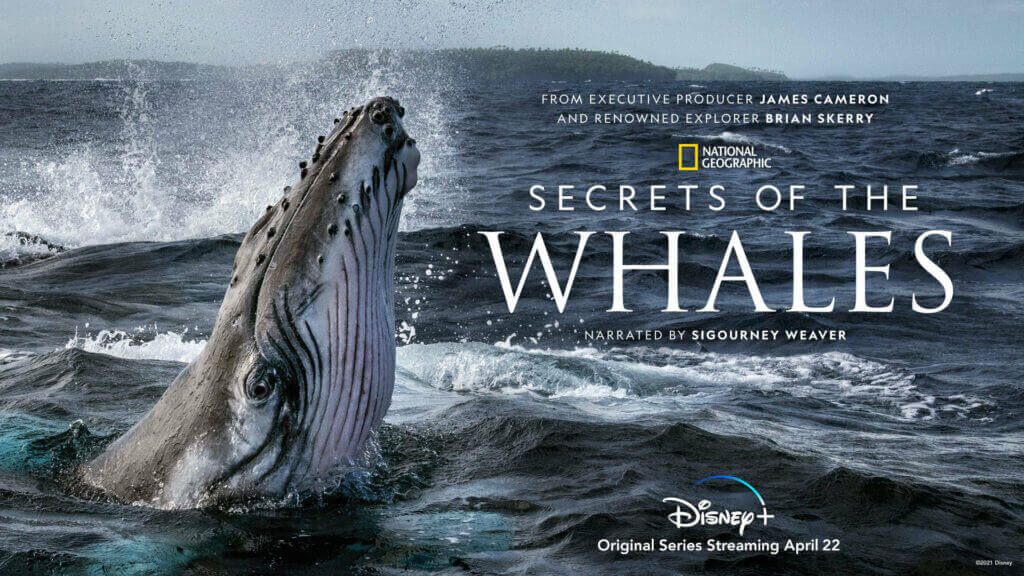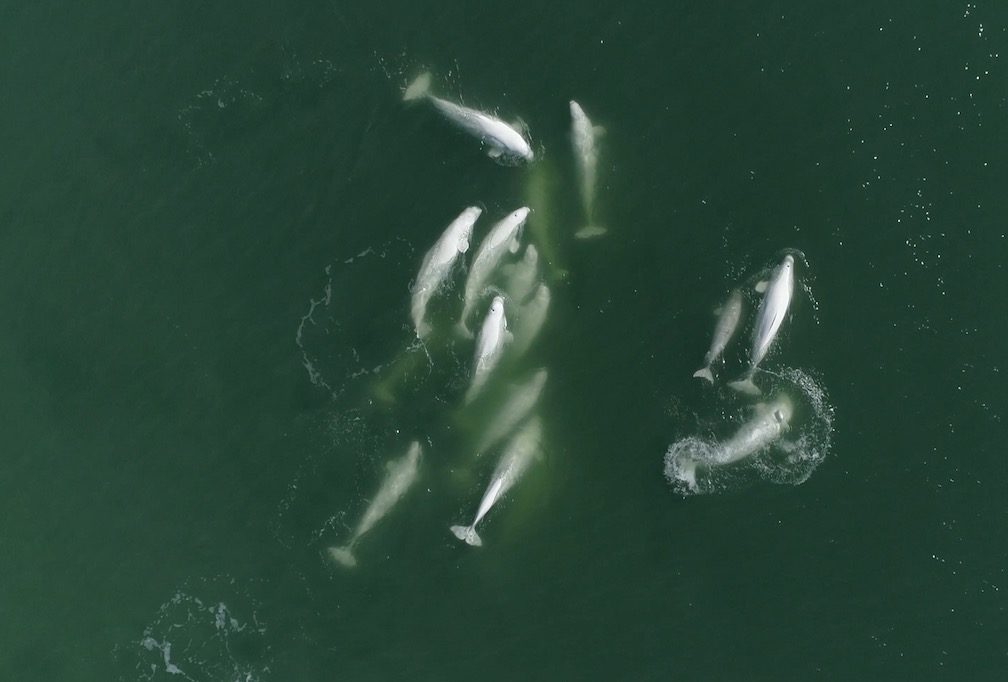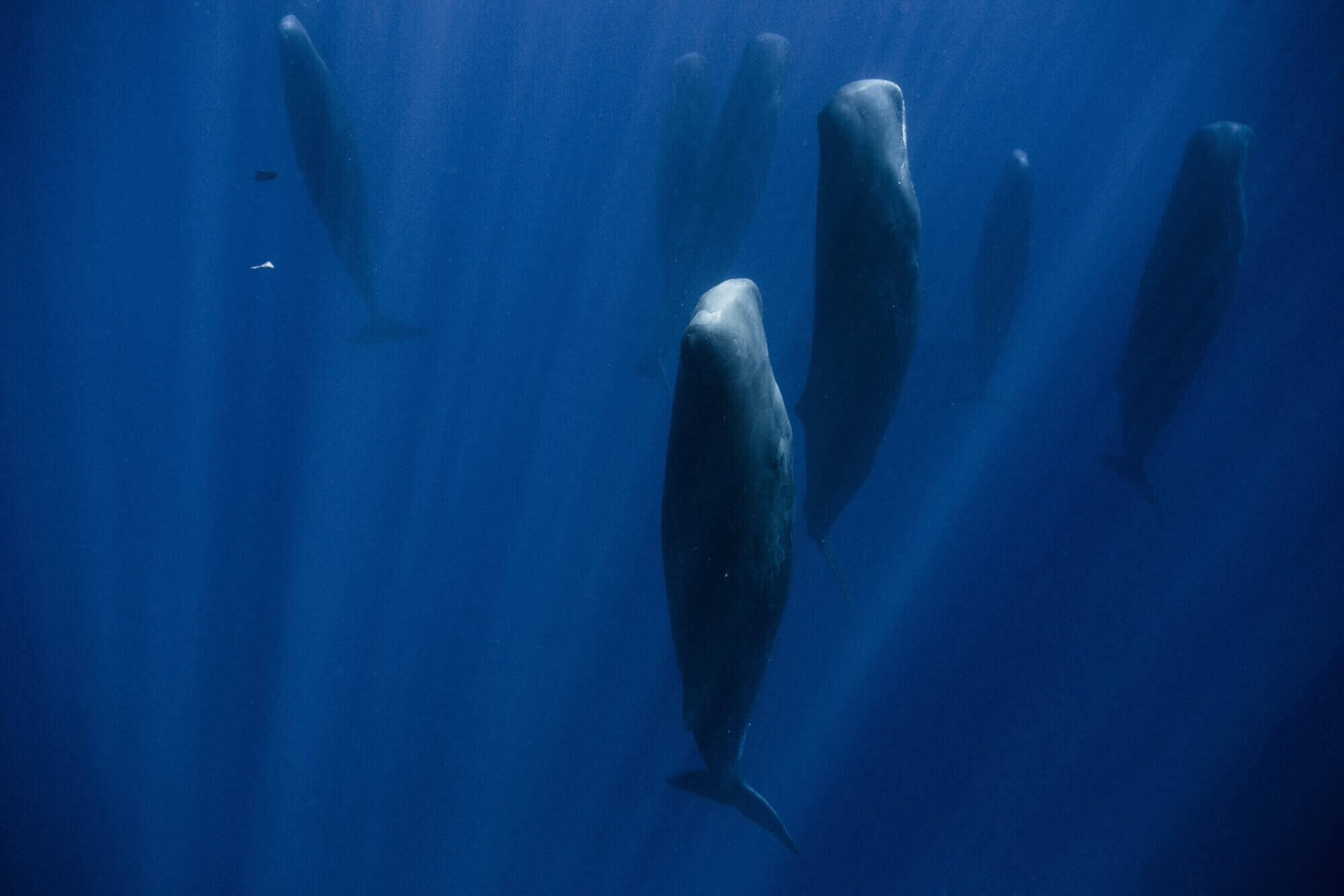They love. They mourn. They play. They share. Whales live in complex societies, each with its own culture. This is the message conveyed by the mini-documentary series Secrets of the Whales presented by Disney+ in collaboration with National Geographic. Produced by Avatar director James Cameron, the series was filmed over more than three years at 24 locations, including Tadoussac, with the Group for Research and Education on Marine Mammals team and its collaborator Valeria Vergara of Ocean Wise. Divided into four episodes and narrated by actress Sigourney Weaver, the series delves into the societies of killer whales, humpbacks, belugas, narwhals and sperm whales.
What did the Whales Online team think? The breathtaking and sometimes exclusive footage as well as the recordings of whale calls and songs are captivating. The tone is neither doom-and-gloom nor alarmist and, more than anything, makes the viewer want to learn more about our beloved whales. Of course, the need for a good story means the truth must be stretched on occasion: it is not known exactly where the narwhal residing in the St. Lawrence comes from, more than one humpback calf was probably filmed to represent migration, etc. Nevertheless, all the elements remain plausible and bear witness to the real issues faced by cetaceans.
On the other hand, we regret that the work of researchers has been overlooked. By starring Brian Skerry, the photographer and videographer who represents the main human character of the series, we all too often forget the scientists whose painstaking, decades-long work has made it possible to understand the behaviours we observe and analyze the vocalizations we hear. Thanks to the in-depth knowledge of the field shared by researchers, the director was able to find the most suitable places to film and interpret the recorded images, which we feel may have deserved greater recognition.
But the big plus of the series is that it inspires fascination with whales. It touches upon several mysteries, but obviously does not unravel them all. Whales Online therefore invites our readers to broaden their understanding by putting certain concepts or scenes featured in the episodes into perspective.
What is culture?
Scientists have long avoided talking about culture in whales. Canadian researcher Hal Whitehead, on the other hand, did not hesitate to develop this thesis. Culture is a set of knowledge and codes that are transmitted through a group and that end up defining this group… this society, in relation to others. In this series, this is demonstrated via the transmission of specific hunting techniques in killer whales, learning of dialects in sperm whales or the choice of migration sites in belugas. What the series does show, albeit very briefly, is that in addition to the broad social traits that characterize a species, populations and, even on a smaller scale, the organization of society vary.
To learn more about social life in whales, click here.
A powerful scene
One of the most stunning scenes is that of a nursing sperm whale calf (first-year animal). An intimate activity, nursing has mainly been observed in belugas or dolphins in captivity, but very seldom in the wild. Like us, whales are mammals, so their offspring are first fed on breast milk. But drinking under water is quite a challenge! The absence of lips and the fact that the nipples are hidden in slits make matters all the more complicated. Fortunately, evolution has made breast milk thicker, almost to the consistency of yogurt, and very high in fat (13 to 53%, depending on the species). It is known that calves lack the muscles in their mouths necessary to suckle. The mother therefore ejects the milk into the offspring’s mouth. For the sperm whale, it seems that the narrow lower jaw is also helpful for catching milk effectively. In the video, we can see the little one inserting the tip of its jaw into the slit. These never-before-seen images once again demonstrate the beauty and ingenuity of nature!
To learn more about nursing and the mother-calf relationship, take a dive here.
Mourning
In the first episode of the series, a mother killer whale carries her dead calf on her head. In animals, the term “epimeletic behaviour” is used to refer to this type of interaction that demonstrates a strong attachment to a dead pod member. Belugas have already been seen in the St. Lawrence exhibiting this type of behaviour. This presumed mourning can last from a few hours to a few days or even weeks, as was the case with J-35, a female killer whale that kept her stillborn calf at the surface for 17 days!
To go deeper into this subject, click here.
Sleeping standing up
How impressive are these sperm whales that sleep “standing up”! This species is the only one that has ever been documented sleeping in a vertical position. Other species of whales are known to sleep close to the surface so they can breathe more easily. This is called “logging”, since their large bodies treading water on the surface resemble floating logs. Recently, a tag equipped with a video logger on the back of a humpback has given us a somewhat new perspective. The camera captured three humpback whales sleeping under water, only grazing the surface with a brief exhalation and inhalation. Their bodies were horizontal, however.
To learn more about sleep, click here.
Now, what can we do to help them?
In the St. Lawrence as elsewhere, whales face a multitude of threats, some natural, but many anthropogenic, unfortunately. A documentary series like Secrets of the Whales helps us find the energy and the strength to make the necessary compromises in our daily lives to live in greater harmony with cetaceans, take better care of our environment and better transmit our convictions to decision-makers and businesses.
To find gestures that are within your reach, start here.
Do other questions come to mind after watching the series? Do not hesitate to send them in to us.








